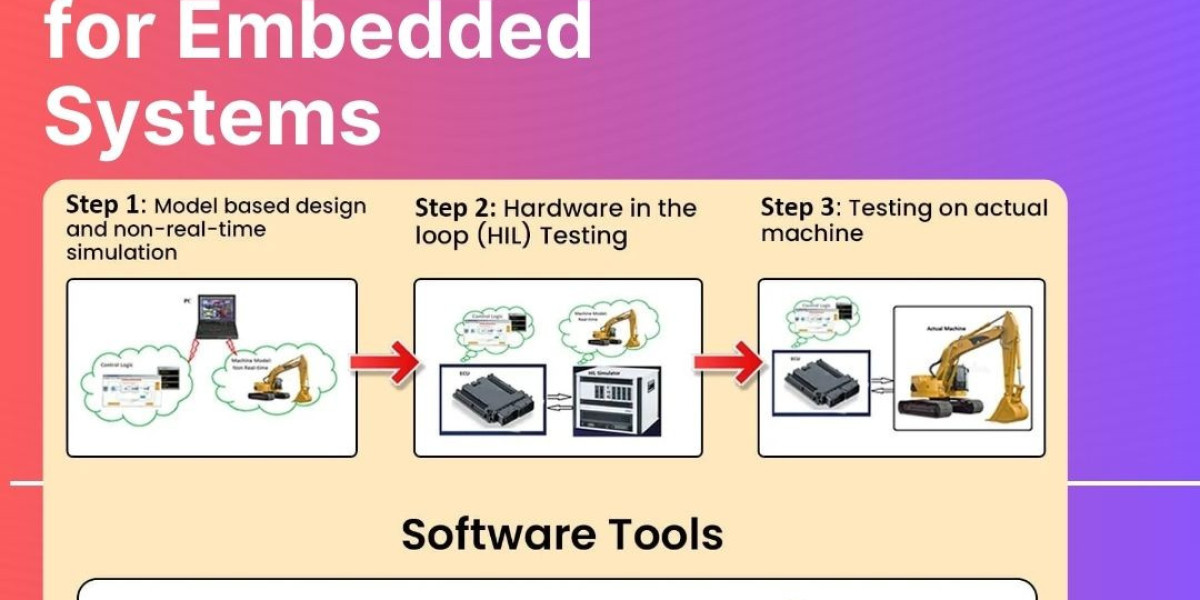In today's fast-paced technological landscape, the demand for embedded systems continues to grow, with applications ranging from automotive to industrial automation. To keep up with this demand, optimizing the development process is essential. One way to achieve this is through the use of specialized development tools and embedded components. In this article, we will explore how companies like Servotech leverage these tools to enhance the efficiency of embedded systems, reducing development time and increasing product reliability.
What Are Embedded Systems?
Embedded systems are specialized computing systems designed to perform dedicated tasks. Unlike general-purpose computers, they are integrated into larger systems, providing critical functions. Examples include microcontrollers in home appliances, automotive control systems, and industrial robots. Due to their specific nature, the development of embedded systems requires a unique set of tools and components to ensure they meet performance and reliability standards.
Importance of Development Tools in Embedded Systems
The success of an embedded system heavily relies on the quality and efficiency of the development tools used. These tools streamline the design, testing, and deployment phases, enabling developers to detect and resolve issues early in the process. By utilizing the right tools, companies can reduce time-to-market and minimize costly errors, leading to more robust and reliable products.
Key Development Tools for Embedded Systems
To maximize efficiency, it’s crucial to select the right mix of development tools. Here are some of the essential tools used in the embedded systems industry:
1. Integrated Development Environments (IDEs)
IDEs like MATLAB and Simulink offer a comprehensive platform for developing, debugging, and simulating embedded software. These environments support a range of languages, including C, C++, and Python, making them versatile for different project needs.
2. Debugging Tools
Debugging is a critical part of the development process. Tools like JTAG debuggers help developers test embedded components in real time, allowing them to identify and fix issues quickly. This reduces downtime and enhances the overall quality of the system.
3. Compilers and Assemblers
Compilers and assemblers convert high-level code into machine language that the microcontroller can execute. Popular compilers like GCC and Keil help optimize the code, making it more efficient and reducing memory usage.
4. Simulation and Testing Tools
Tools such as HIL (Hardware-in-the-Loop) simulators allow developers to test embedded components in a virtual environment before actual deployment. This helps identify potential problems and make necessary adjustments, ensuring smooth performance in real-world applications.
Benefits of Using Advanced Development Tools
The use of advanced development tools in embedded systems offers numerous benefits:
Reduced Development Time: By streamlining coding, debugging, and testing processes, these tools help bring products to market faster.
Enhanced Product Quality: Advanced testing and simulation tools help detect and resolve issues early, resulting in more reliable and robust embedded systems.
Improved Efficiency: Automation features in many development tools reduce the manual effort required, allowing developers to focus on optimizing system performance.
Embedded Components and Their Role
Embedded components such as microcontrollers, sensors, and actuators play a vital role in the functioning of embedded systems. Selecting high-quality components is crucial for ensuring that the system performs reliably under different operating conditions. Companies like Servotech focus on integrating the best components to deliver high-performance solutions tailored to specific industry needs.
Choosing the Right Development Tools
Selecting the appropriate development tools depends on several factors, including project requirements, budget, and team expertise. Here are some tips to consider:
Project Scope: Define the scope of your project to determine the complexity and types of tools required.
Compatibility: Ensure that the tools you choose are compatible with your embedded components and software environment.
Ease of Use: Opt for user-friendly tools that provide clear documentation and support, which can help reduce the learning curve for new developers.
How Servotech Maximizes Efficiency
At Servotech, we leverage a range of state-of-the-art development tools to enhance the performance of embedded systems. Our team of experienced engineers uses industry-standard software like MATLAB, Simulink, and HIL simulators to streamline the development process, ensuring high-quality, reliable solutions for our clients. With our focus on continuous improvement, we help businesses optimize their embedded systems for maximum efficiency.
Future Trends in Development Tools for Embedded Systems
Embedded systems are constantly evolving, with new tools and technologies emerging regularly. Some of the upcoming trends include:
AI-Powered Development Tools: Artificial intelligence is starting to play a significant role in code optimization and automated testing, reducing the time and effort required for development.
Cloud-Based Development Environments: These platforms allow developers to collaborate more effectively, offering scalability and access to powerful computing resources.
Edge Computing Integration: As embedded systems move towards edge computing, development tools are being updated to support real-time data processing and analytics directly on embedded devices.
Conclusion
The efficient development of embedded systems relies heavily on the right mix of development tools and embedded components. By utilizing advanced tools like IDEs, debuggers, and simulators, companies like Servotech can optimize the design process, reduce development time, and enhance product quality. As technology advances, staying updated with the latest tools and trends will be essential for maintaining a competitive edge in the industry.
For more information on how Servotech can help you optimize your embedded systems, visit our website at Servotech Embedded Software.








